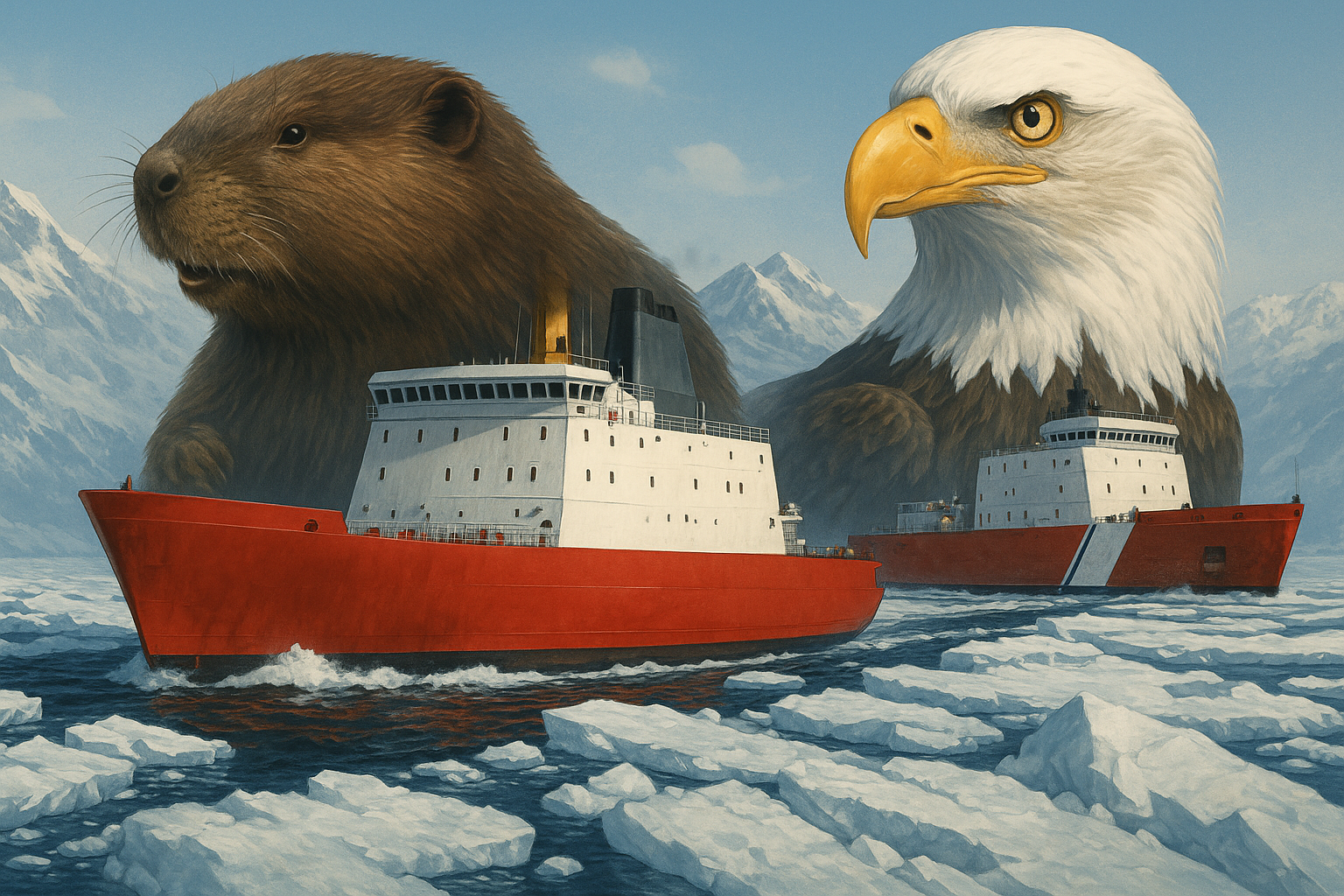Canada is quietly emerging as a key architect in shaping the future of U.S. Arctic capabilities. While Washington continues to face delays and cost overruns in its domestic icebreaker programs, Canadian shipbuilders and their partners are presenting a faster, more refined solution—one that leverages Canadian designs, Finnish expertise, and a strategic sense of timing. What was once a peripheral role in the defense of North America’s Arctic is now becoming a central one. Canada is no longer just supplying icebreakers for its own waters; it is now shaping the vessels that may power the U.S. Coast Guard’s Arctic operations well into the next decade.
At the center of this effort is a proposal to deliver Arctic Security Cutters to the U.S. Coast Guard by 2028—years ahead of the long-delayed American Polar Security Cutter program. The offer, led by a consortium of Canadian and Finnish firms, aims to use a Canadian-designed icebreaker originally developed for the Canadian Coast Guard, which has already met U.S. specifications. The platform is proven, the timelines are realistic, and the industrial base is in place. In effect, Canada is offering not just to supply ships but to plug a strategic gap in America’s Arctic readiness.
The scope of Canada’s ambition goes beyond a single project. Davie Shipbuilding in Quebec has been making calculated moves to control the entire icebreaker value chain. This includes acquiring a Finnish steel fabrication company and taking over the assets of Helsinki Shipyard, one of the most respected names in ice-class vessel construction. By vertically integrating the supply of high-grade Arctic steel and securing European shipbuilding expertise, Davie is positioning itself as a global leader in polar vessel manufacturing. These acquisitions are not about prestige—they are about capacity, control, and influence.
Meanwhile, Seaspan, based in British Columbia, has signed a memorandum of understanding to secure steel supply for its heavy polar icebreaker project, which is already in motion. With steel cutting underway and a clear production schedule, the Canadian shipyard is showing the kind of execution that Washington has struggled to achieve with its domestic programs. The contrast is stark: Canada is building; the U.S. is still designing.
What makes this development particularly significant is that it is underpinned by the ICE Pact, a trilateral framework between Canada, the United States, and Finland designed to address the growing urgency of polar shipbuilding. In a world where Arctic routes are becoming increasingly contested, this partnership is more than symbolic—it is strategic. Yet Canada is clearly the driving force, using its industrial base to influence how and where icebreakers will be built and what designs will be used.
While U.S. law generally mandates that naval and Coast Guard ships be built domestically, the ICE Pact and mounting strategic urgency may pave the way for limited exceptions or transitional solutions. Canadian shipbuilders, in acquiring European know-how and ramping up North American capacity, are making themselves the logical partners. It is a smart play—both politically and economically. The U.S. needs icebreakers, and Canada is offering a way to get them faster without compromising capability.
But there are risks. By allowing Canadian designs and infrastructure to dominate the early phase of U.S. icebreaker production, Washington may inadvertently create a dependency. If future vessels are based on foreign blueprints, and initial units are constructed or partially built overseas, American shipyards could find themselves relegated to secondary roles. Technology transfer and long-term production sovereignty must therefore be part of any agreement. The U.S. cannot afford to outsource strategic Arctic capacity without securing the knowledge and tools to eventually bring all production home.
At the same time, Washington must recognize that these Canadian initiatives are not born of charity. They are calculated moves to elevate Canada’s role in Arctic defense, shipbuilding, and influence. By shaping America’s next generation of icebreakers, Canada is asserting its place as a maritime power in the North—not just for its own sovereignty, but as a supplier and co-architect of allied capability. It is a powerful statement, and one the U.S. would do well to take seriously.
The emerging collaboration between Canada and the United States in polar shipbuilding could represent a model of pragmatic alliance-building. Canada has the capacity, the design, and the momentum. The U.S. has the need, the urgency, and the global responsibilities. What remains is to strike the right balance—ensuring that American requirements are met swiftly and efficiently, while preserving domestic industrial strength and strategic autonomy.
In the race to dominate Arctic shipping lanes, to protect sovereignty, and to deter adversaries, icebreakers are more than just ships—they are instruments of statecraft. Canada understands this, and through strategic acquisitions and disciplined execution, it is stepping into a leadership role. Whether the United States follows through with partnership or falls back into bureaucratic delay will define not only its Arctic presence but also its willingness to work with allies who are already delivering.














